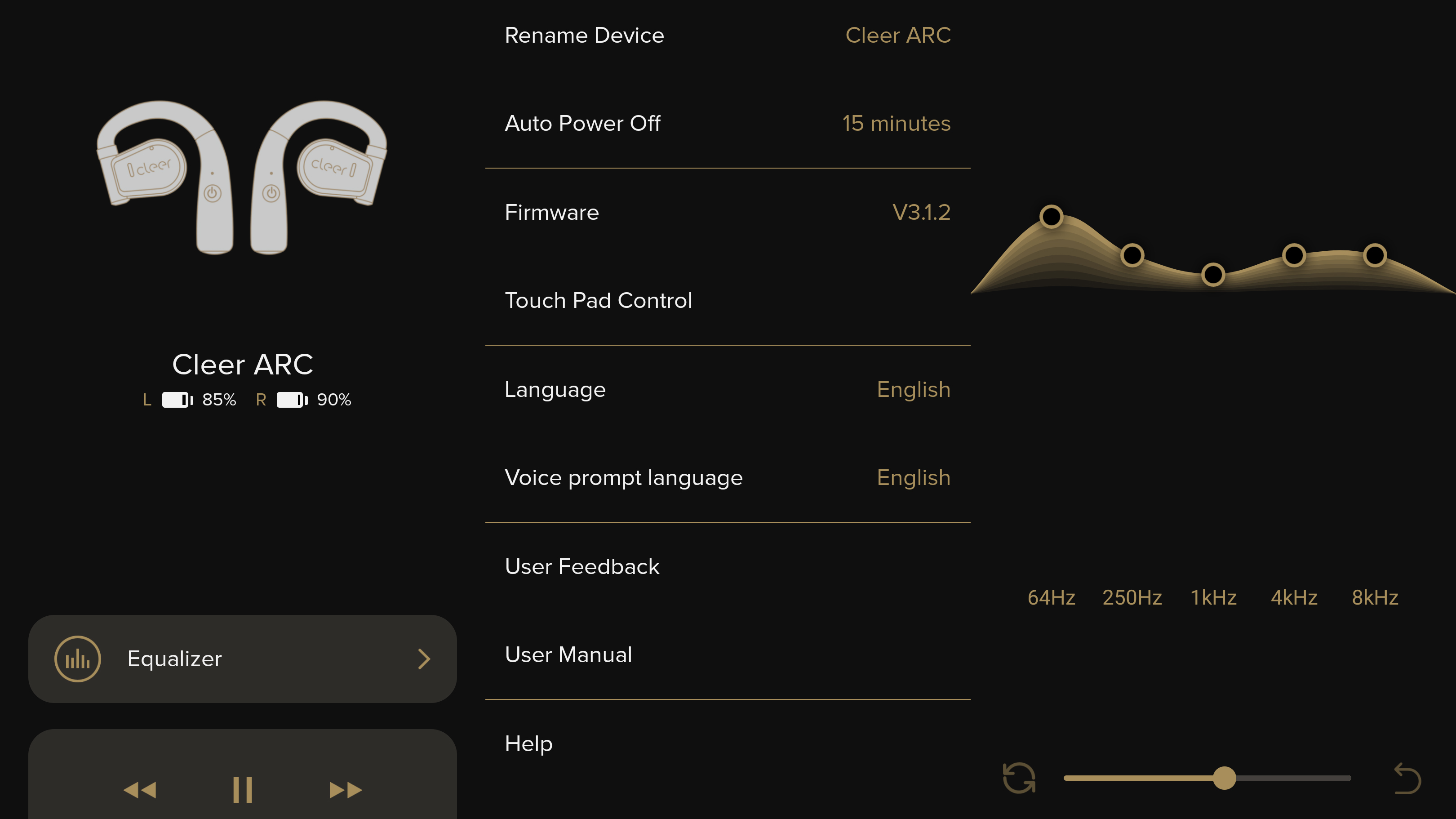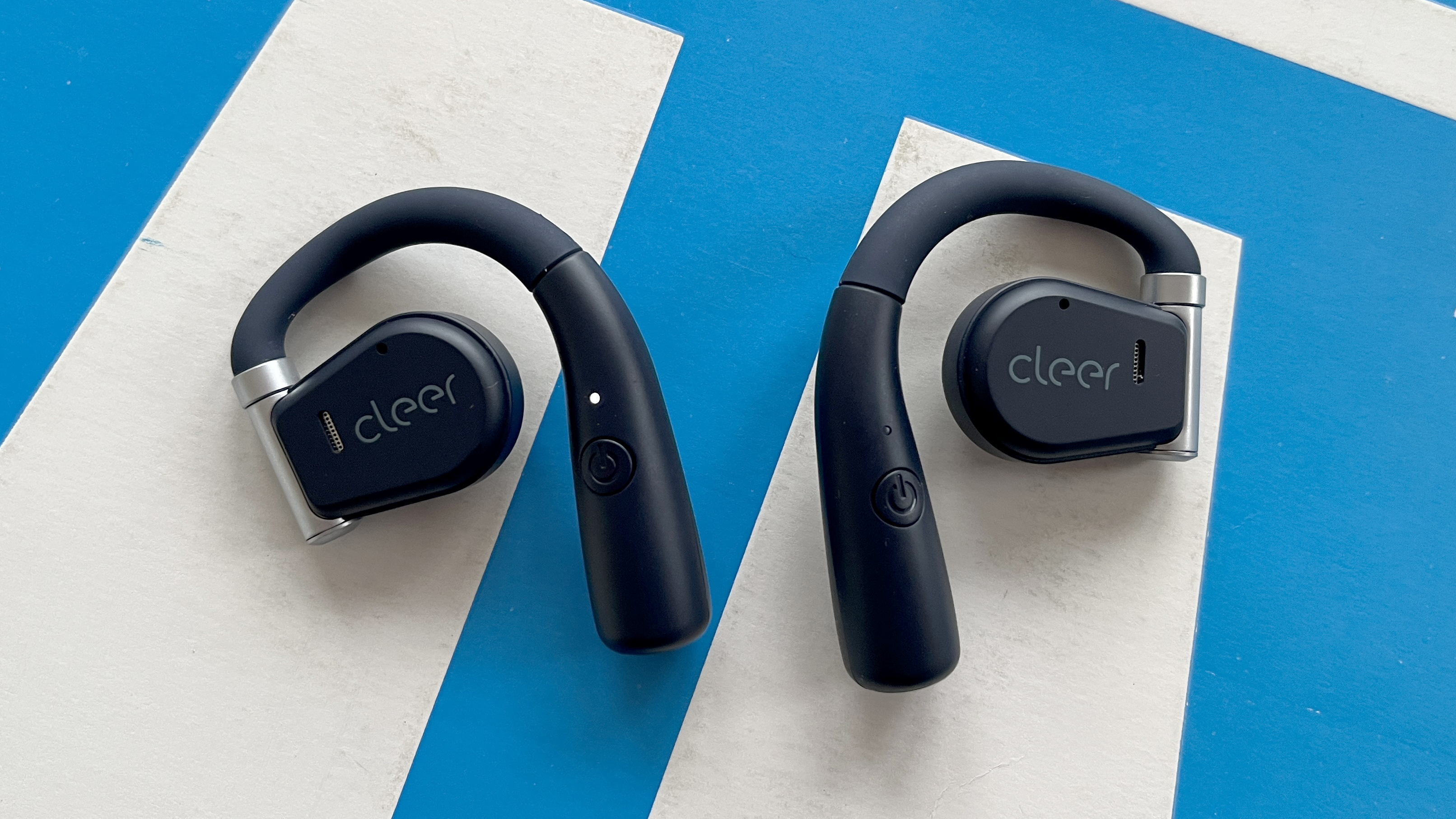Cleer ARC review: sound idea, except for the actual sound quality
Cleer's ARC earphones are designed to hear the world around you, but do they actually sound any good as a result?

The Cleer ARC open-ear headphones are a fine idea - but ultimately the sound they make isn’t a big part of what’s good about them.
-
+
Efficient open-ear design
-
+
Stable once in situ
-
+
Useful control app
-
-
Sound lacks detail and definition
-
-
Fiddly to get into position
-
-
No additional power in the case
Why you can trust T3

California’s Cleer Audio is establishing a quietly impressive product portfolio, with the emphasis on smart speakers, wireless earbuds and equally wireless headphones.
But with the Cleer ARC it’s attempting something a degree or two removed from the norm: open-ear wireless headphones that want to deliver plenty of sonic performance while keeping you in touch with what’s going on around you.
Anyone who enjoys listening while exercising, but also exercising without putting themselves in mortal danger, is certain to be interested. So are the ARC fit for purpose?
Cleer ARC: Price & Availability
The Cleer ARC open-ear true wireless earbuds are on sale now, and in the United Kingdom they cost £129 per pair. They’re priced at $129 in the United States, and in Australia they go for AUD$229.
It’s not hard to find true wireless earbuds at this sort of money, of course. But the Cleer ARC manage to set themselves apart from almost all price-comparable rivals, of course, thanks to their unusual configuration. Only really the Sony LinkBuds are a logical comparison point.
Cleer ARC review: Features & What's New?

The ARC arrive in quite a large, quite pleasantly textured travel case. It’s not a ‘charging’ case in the regular sense, insomuch as it doesn’t hold any additional power with which to charge the headphones themselves - but it has an integrated, captive USB-A cable and it’s where the headphones need to rest in order to charge. Battery life itself is an OK-we-suppose seven hours, and you can get another hour of playback by plugging the case’s USB-A into some mains power.
Wireless connectivity is via Bluetooth 5.0, and there’s compatibility with Qualcomm’s aptX codec. Sound is delivered by a couple of 16.2mm Neodymium full-range dynamic drivers - which is an altogether bigger and more serious driver than that fitted to traditional in-ear earbuds. Cleer is claiming a frequency response of 20Hz - 20kHz.
Get all the latest news, reviews, deals and buying guides on gorgeous tech, home and active products from the T3 experts
There’s no noise-cancellation (ANC) here, of course - the whole design of the ARC encourages access to external sound. But there are a couple of cVc beam-forming mics to deal with telephony.
Cleer ARC review: Performance

Once wrestled into position, the ARC stay good and stable - all the better to assess the plusses and minuses of the way they perform.
On the plus side, there’s no arguing with the effectiveness of the design. It’s easy to hear external sounds, even if they’re only conversational - and the benefits for those who want to wear the ARC while out and about getting some exercise are obvious. Cyclists, in particular, will find this sort of arrangement nigh-on ideal. Being able to hear what other road-users are up to even while enjoying some music, a podcast or whatever is not to be sniffed at.
‘Enjoying’, though, is a relative term. That the Cleer ARC deliver sound efficiently into the upper ear can’t be denied, but the quality of the sound they serve up is questionable.
At the top of the frequency range, treble sounds are splashy and edgy - ‘crispness’ is all well and good, but the treble here lacks definition and doesn’t need much encouragement to become rather vague. The attack and decay of individual top-end sounds can get rather lost, with a sort of unbroken zizziness being the overriding signature.
And at the opposite end, bass sounds are similarly short of definition. The shape of low frequencies is easily blurred, and bass-heavy recordings can sound sludgy and rather bogged down. But at the same time, the Cleer struggle to generate properly appropriate bass weight and presence - so the ARC contrive to sound both lightweight and muscle-bound at the same time.
Midrange sounds are a little better realised, with a decent amount of air around voices and a nicely direct, quite positive presentation. Vocals cut through, and as a consequence the ARC are probably more suited to podcasts and audiobooks than they are music.
It follows that there’s not a great deal of dynamic potency here - the distance between ‘quieter’ and ‘louder’ is really no distance at all. Everything that happens, happens at more-or-less the same level of intensity.
Cleer ARC review: Design & Usability

The Cleer ARC, unlike the majority of head-clutching bone-conducting alternatives, use an ear-hook arrangement to keep the business area of the design in position just above the wearer’s ear. The union between hook and driver housing is hinged, in theory to help with initial positioning - but in practice, getting the ARC in place is altogether more fiddly and approximate than it should be. Once they’re in place they remain secure even during quite concerted movement - but getting them there is an inelegant process to say the least.
Each earbud is almost 15g, but the fit is nicely ergonomic (once actually achieved) and so they don’t feel like any kind of burden to wear, even if you’re one of those fully committed exercisers who like to try and outlast their headphones’ battery. An IPX4 rating means they’ll resist all the sweat that workout generates, too. The standard of build seems more than adequate, though the plastics themselves aren’t what you’d call ‘tactile’.
There is a degree of touch-control available via the capacitive surface on each driver housing - they can be rather slow and/or approximate in their response, but in theory it’s possible to adjust volume, skip tracks backwards and forwards, toggle between ‘play’ and ‘pause’, deal with telephony and summon your player’s native voice-assistant. This last, ultimately, proves a far more reliable way of getting your bidding done.
There’s a degree of control available via the Cleer+ app, too. As well as play/pause and skip track, here’s where you can access a five-band EQ, check for firmware updates and (mildly) rearrange the functions of the touch-controls. It’s quite a nice-looking app, clean and stable, and as such is an improvement on any number of offerings from alternative brands.
Cleer ARC review: Verdict

In the end, the principle is more appealing than the execution. The Cleer ARC are the right idea: stable, true wireless open-ear headphones with decent battery life, and that keep the user informed of external activity just as much as they do of the music that’s playing. But in practice, the rather neutered and indistinct nature of the sound of the ARC makes them a less than compelling proposition.
Also consider
They aren’t true wireless - there’s a behind-the-head connection - and they’re bone-conducting rather than open-ear headphones, but the Shokz OpenRun are preferable to the Cleer ARC in every sonic respect. The bone-conducting technology works well, battery life is a little better than the ARC, and the sound quality is superior too.
Simon Lucas is a freelance technology journalist and consultant, with particular emphasis on the audio/video aspects of home entertainment. Before embracing the carefree life of the freelancer, he was editor of What Hi-Fi? magazine and website – since then, he's written for titles such as Wired, Metro, the Guardian and Stuff, among many others. Should he find himself with a spare moment, Simon likes nothing more than publishing and then quickly deleting tweets about the state of the nation (in general), the state of Aston Villa (in particular) and the state of his partner's cat.
